Olbers’ paradox
description: the argument that the darkness of the night sky conflicts with the assumption of an infinite, static universe
7 results
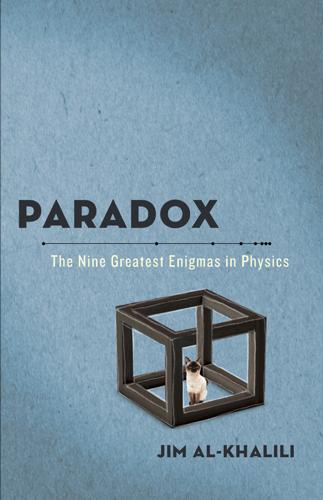
Paradox: The Nine Greatest Enigmas in Physics
by
Jim Al-Khalili
Published 22 Oct 2012
Q173.A395 2012 500—dc23 2012005011 eISBN: 978-0-307-98680-1 Illustrations: Patrick Mulrey Cover design: Kyle Kolker Cover photography: istockphoto v3.1 To Julie, David, and Kate Contents Cover Title Page Copyright Dedication Preface 1 The Game Show Paradox 2 Achilles and the Tortoise 3 Olbers’ Paradox 4 Maxwell’s Demon 5 The Pole in the Barn Paradox 6 The Paradox of the Twins 7 The Grandfather Paradox 8 The Paradox of Laplace’s Demon 9 The Paradox of Schrödinger’s Cat 10 Fermi’s Paradox 11 Remaining Questions Acknowledgments About the Author Preface Paradoxes come in all shapes and sizes.
…
Zeno’s paradoxes have taken us from the very birth of physics to cutting-edge ideas in the twenty-first century. All the other paradoxes in this book arose somewhere in between. In resolving them we will have to travel to the furthest reaches of the Universe and explore the essence of space and time themselves. Hold on tight. 3 OLBERS’ PARADOX Why does it get dark at night? Several years ago I was on holiday with my family and a group of friends in France. We were staying in an idyllic country farmhouse in the Limousin region of the Massif Central, one of the most sparsely populated areas of the country. Late one evening, with the children asleep, we adults were sitting outside enjoying a last glass or three of the local red wine, looking up at the clear, sparkling night sky and commenting on how France is big enough for one still to find uninhabited swathes of countryside where the light pollution is low, and how unaccustomed we were, living in the densely populated southeast of England, to being able to see so many stars overhead.
…
After all, even a child knows that night falls when the Sun “sets” below the horizon, and that since there is nothing else in the night sky anywhere near as bright as the Sun we have to make do with the feeble reflected light from the Moon and the even more feeble light emanating from the distant planets and stars. And yet it turns out this question is far more significant than it first appears. Indeed, astronomers puzzled over it for hundreds of years before they found the correct answer. It is known today as Olbers’ Paradox. Here, then, is the problem. We have good reason to believe that even if the Universe is not infinite in size (and it may well be), it is so enormous that to all intents and purposes it goes on forever. Thus, in every direction we care to look out into space, we should see a star, and the sky should be even brighter than it normally becomes during the day; in fact, it should be so bright, all the time, that it should not even matter whether it is day or night according to our Sun.
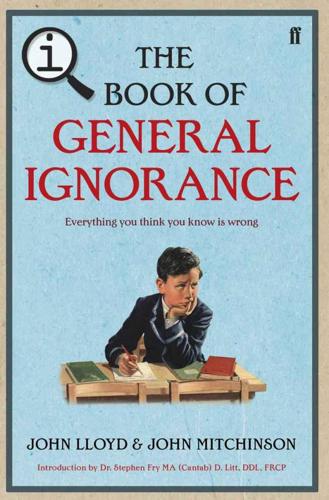
QI: The Book of General Ignorance - The Noticeably Stouter Edition
by
Lloyd, John
and
Mitchinson, John
Published 7 Oct 2010
Since the seventeenth century, some of the greatest and most curious minds have wondered why it is that the night sky is black. If the universe is infinite and contains an infinite number of uniformly distributed stars, there should be a star everywhere we look, and the night sky should be as bright as day. This is known as Olbers’ Paradox, after the German astronomer Heinrich Olbers who described the problem (not for the first time) in 1826. Nobody has yet come up with a really good answer to the problem. Maybe there is a finite number of stars, maybe the light from the furthest ones hasn’t reached us yet. Olbers’ solution was that, at some time in the past, not all the stars had been shining and that something had switched them on.
…
H. 1 Morris, Desmond 1 Mortensen, Christian 1 mosquitoes 1, 2, 3 moths flames and 1 stimulating 1 mountains highest 1 tallest 1 Mount Augustus 1 Mount Chimborazo 1 Mount Conner 1 Mount Everest 1 and asthmatics 1 Mount Kilimanjaro 1 Mount Olga 1 Mozart, middle name of 1 Mumford, Louis 1 Murray, George 1 muscles strongest in human beings 1 use of, in smiling and frowning 1 mushroom, as largest organism 1 music La Marseillaise 1 Nero’s instruments 1 ‘ring-a-ring o’ roses’ 1 and snake charming 1 nacre 1 Naismith, James 1 Namaqua people 1 names of boys, most popular 1 Namibia 1, 2 NASA 1, 2, 3, 4, 5, 6, 7 Nast, Thomas 1 ‘Near Earth’ Asteroids (NEAs) 1 Near Earth Object (NEO) 1 neck ties 1 Nelson, Horatio 1 eye-patch 1 funeral 1 last words 1 preservation in brandy 1 and ventriloquism 1 Nepal 1 Neptune 1, 2 Nero 1, 2 Netherlands 1, 2, 3, 4, 5 nettles World Stinging Nettle Eating Championship 1 WWI German uniforms made from 1 neurons 1, 2, 3, 4 New Zealand 1, 2 Newton, Isaac 1 newts 1, 2 Nicholas, Saint 1 Nicot, Jean 1, 2 nicotine colour of 1 etymology 1 toxicity 1 Nile, river 1 ‘Night before Christmas, The’ (Moore) 1 nitrogen 1 Noah 1, 2 Noah’s Ark, sheep on 1 nociception 1 Nome, Alaska, naming of 1 North America, camels from 1 Norway 1, 2 nuclear war, most likely survivor of 1 numbers, unlucky 1 nuts, definition of 1 Oates, Titus 1 ocean, loudest noise in 1 Olazowa Cave 1 Olbers, Heinrich 1 Olbers’ Paradox 1 Old English Game fowl 1 Olsen, Lloyd 1 Olympics, modern 1, 2 Olympus Mons, see Mount Olympus Oompa-Loompas orange 1 original, 1 orang utans 1 orange, words rhyming with 1 Orkney, polar bear in 1 osmium 1 ostriches 1, 2 owls on the Ark 1 colour-blindness of 1 eaten by Darwin 1 eyes of 1 sounds of 1 oysters 1 ozone 1, 2, 3 Palin, Michael 1 Panama 1, 2 Panama hats, origins of 1 panthers, colour of 1 papacy 1 paper, possible number of folds in 1 paper clip, invention of 1 Papua New Guinea cannibalism in 1, 2 lack of colour words 1 Parker, David 1 Parker, Hyde 1 Parkes, Alexander 1 Parr, Catherine 1 Parton, Dolly 1 Pascal, Blaise 1 Pasteur, Louis 1 Paterson, William 1 Patrick, Saint 1 Paul, Saint 1 Paul I, Czar of Russia 1, 2 peanuts 1 pearls, middle of 1 Pedro, King of Castile 1 pencils, consequences of sucking on 1 penicillin, discovery of 1 penises baculi 1 barnacles 1 in the Bible 1 blue whales 1, 2 European earwigs 1 length of, related to shoe size 1 replaced by sandwich 1 Penn, William 1 Penny Post, invention of 1 Pepys, Samuel 1 Perey, Marguerite 1 Periander 1 Pérignon, Dom 1 Perovski, Count Lev 1 perovskite 1 Perrault, Charles 1, 2 Perseus, virgin birth of 1 Peru 1, 2, 3, 4 Peter the Great 1 Pheidippides 1 philtrum 1 phorids 1 Piccadilly Circus, name of statue 1 Pierce, Franklin 1 pineapples 1 Pinker, Stephen 1 Pisa, Rustichello da 1 pistachios 1 planets naming of 1 number of 1 plaster of Paris 1 naming of 1 Pliny the Elder 1, 2, 3, 4, 5, 6, 7 Plunket, Saint Oliver 1 Plunkett, Roy 1 Plutarch 1 Pluto 1, 2, 3, 4 Poe, Edgar Allan 1 poisons antitdote to arsenic 1 ethyl gasoline 1 and Nero 1 and newts 1 and snakes 1 in tobacco 1 Poland 1, 2, 3 polar bears 1, 2, 3 Polo, Marco 1, 2 ‘pom’, as nickname 1 pomegranate 1, 2 Pony Express 1 porridge, origins of 1 Portugal 1, 2, 3, 4 potatoes evolutionary path of 1 introduction of 1, 2 nicotine in 1, 2 Potemkin, Grigori Alexandrovich 1 Procopius 1 proprioception 1 Prozac 1 Prussia 1 Ptolemy II 1 Puerto Rico 1, 2 puma 1, 2 punctuation 1 Punxsutawney Phil 1 Pythagoras 1 Quaker Oats, creation of 1 Quinion, Michael 1 rabbits 1, 2 raindrops, shape of 1 Raleigh, Walter 1 Rama I, King of Thailand 1 Randolph, Peyton 1 raspberries 1 rats, colour-blindness of 1 Recorde, Robert 1 Red Jungle Fowl, chickens descended from 1 Redi, Francesco 1 Reed, Carol 1 reindeer antler loss in 1 domestication of 1 speed of 1 Remarque, Erich Maria 1 Reyburn, Wallace 1, 2 rhinoceroses, horns of 1 Richardson, Lucy 1 Richter, Charles 1 Richter scale 1 rickshaw, invention of 1 ‘ring-a-ring o’ roses’, origin of 1 Roberts, Brushy Bill 1 Robin Hood 1 rock, biggest 1 Romania 1 Rome, ancient Britons considered cannibals 1 carrots as aphrodisiacs 1 fashions in dress 1 gladiators in 1 names for British 1 naming conventions 1 Nero and the fire 1 and number thirteen 1 postal service 1 running-with-a-ball game 1 vomitoria 1 Roosevelt, Robert 1 Roosevelt, Theodore 1, 2 Ross, Ronald 1 Rousseau, Jean-Jacques 1, 2 Rowbotham, Samuel Birley 1 Royal Society 1 rubber boots, invention of 1 rubidium 1, 2 Rudolph the Red-nosed Reindeer, gender of 1 rugby 1 Rugby School 1, 2 Rumsey, H.
…
F. 1 sleep, healthy amount of 1 sloths as most dangerous animal 1 metabolism of 1 three-toed 1 two-toed 1, 2 Slovakia, smallest dog from 1 smallpox 1, 2 smoking 1, 2, 3, 4 snakes charming of 1 poisonous, not venomous 1 probability of a bite 1 rattlesnakes on 1970s TV 1 tolerant of poison 1 snow, Eskimo words for 1 soccer 1 Solanges, Comte de 1 solanine 1 sound barrier, first invention to break 1 South Africa 1, 2, 3 South America 1, 2, 3 cannibalism in 1 flamingos in 1 guinea pigs in 1 peanuts in 1 Spanish pronunciation in 1 South China tigers 1, 2 Spain 1, 2, 3, 4, 5, 6, 7, 8, 9 cannibalism in 1 pronunciation in, and the ‘lisp’ 1 Spam 1 Spears, Britney 1 Spencer, Herbert 1 sperm and division of labour 1 of dogs 1 sensitivity to scents 1 sperm whales 1 Sphinx 1 spiders 1, 2, 3 spirulina 1 Spitfire 1 ‘sport of kings’ 1 squirrels, fur of 1 stamps 1 stars Boomerang Nebula 1 names of constellations 1 Olbers’ paradox 1 shape of 1 visible 1 steam engine, inventor of 1 stomach ulcers, cause of 1 Stone Age peoples, habitats of 1 strawberries 1 Strutt, William John, Lord Rayleigh 1 Stuart, Gilbert 1 Suetonius 1 suicide rate, highest 1 Sundblom, Haddon 1, 2 superconductors 1, 2 superstitions, and pragmatism 1 ‘survival of the fittest’, coining of term 1 Sweden 1, 2, 3 suicide rate in 1 Swiss Family Robinson, surname of 1 Switzerland biscuits in 1 inventions of 1 St Bernards 1 Swiss rolls 1 synaesthesia 1 Tammann, Gustav 1 Tanzania 1 tartans, origins of 1 Taylor, David 1 Taylor, Montague 1 Tchaikovsky, Pyotr Ilyich 1 tea 1, 2, 3 teeth celluloid 1, 2 decay of, and bacteria 1 dental statistics (modern) 1 Washington’s false teeth 1, 2, 3 ‘Waterloo teeth’ 1 Teflon, discovery of 1 telephone, inventor of 1 television, effects on health 1 Tennant, Smithson 1 Thailand 1, 2 capital of 1 chicken ancestor in 1 Theory of Relativity, inventor of 1 thermoception 1 Thom, Charles 1 Thoreau, Henry David 1 Thule 1 Tibet 1 tigers 1 age of, when dangerous 1 highest concentration of 1 see also South China tigers tobacco 1 chemicals in 1 introduced to England 1 as a medicine 1 unusual fertilisers for 1 as world’s biggest killer 1 togas 1 Tokyo 1 toothpaste, bears and 1 Tour de France 1 Toynbee, Arnold 1 Trafalgar, Battle of 1 transport car accidents 1, 2 hydrofoil 1 railways 1 rickshaws 1 Treaty of Madrid 1 Treaty of Versailles 1 trees ‘anti-greenhouse effect’ 1 and loofahs 1 ozone released from 1 role of forest fires 1 in thunderstorms 1, 2 world’s most useful 1 Truman, Harry S. 1 tsunamis 1, 2 tulips, origins of 1 tungsten 1 Turkey 1, 2, 3, 4 turkeys farming techniques 1 origins of 1 Turner, Herbert Hall 1 Turner, J.
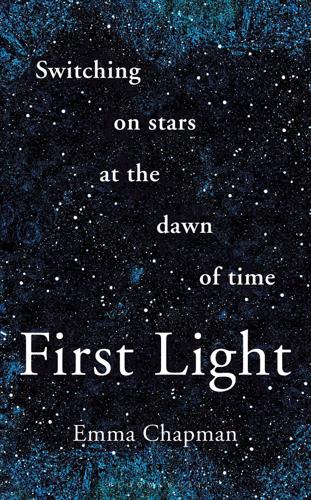
First Light: Switching on Stars at the Dawn of Time
by
Emma Chapman
Published 23 Feb 2021
Overall, though, the key characteristic of the night sky is that it is dark. Why? The littlest of words with the biggest of consequences. For centuries, natural philosophers, physicists, astronomers and even poets wondered why the sky is dark. Their belief was that the Universe was infinitely old and infinitely large, as they had no evidence to the contrary. Olbers’ paradox (named after the German astronomer Heinrich Wilhelm Olbers) states that if the Universe is infinitely old and unmoving then every direction you look in should land on a star. The problem captured the imagination of many and even Edgar Allan Poe weighed in, in his 1848 prose poem ‘Eureka’: ‘Were the succession of stars endless, then the background of the sky would present us a uniform luminosity, like that displayed by the Galaxy – since there could be absolutely no point, in all that background, at which would not exist a star.’
…
Absolute Radiometer for Cosmology, Astrophysics and Diffuse Emission 2 (ARCADE 2) here absorption lines galactic spectra here, here quasar spectra here, here stellar spectra here, here, here, here, here, here, here acceleration here accretion disks black holes here, here, here, here star formation here, here Adams, Douglas here airships here, here, here All the Dead Stars (Paterson) here Aller, Lawrence here, here Alpha Centauri here alpha-element ratios here anaerobic life here Andromeda here age of light from here blueshifting here, here, here, here calcium absorption lines here, here, here collision with Milky Way here, here dwarf galaxies around here high- and low-velocity stars here H-R diagrams here luminosity here angular size here Antennae Galaxies here Antikythera device here astrology here astronauts here asymptotic giant branch (AGB) stars here atomic bombs here atomic cooling halos (ACH) here Baade, Walter here, here background radiation excess background theory here see also cosmic microwave background baryonic mass here Beanie Baby bubble here Bell Telephone Laboratory here Bell-Burnell, Jocelyn here beryllium here Betelgeuse here Big Bang here, here, here, here, here see also cosmic microwave background binary systems here, here black holes here, here, here accretion disks here, here, here, here accretion limit here binary systems here at centre of galaxies here, here, here direct collapse here, here, here first image here light and here Massive Compact Halo Objects (MACHOs) here Population III stars here, here, here quasars here, here, here, here supermassive here, here, here, here blackbody spectrum here, here, here, here, here, here, here blood moons here blueshifting here, here, here, here Bond, Howard here Bowman, Judd here Brown, Ernest here brown dwarfs here, here Bryson, Bill here Butler, Howard here calcium here, here, here Cannon, Annie Jump here carbon here, here, here carbon dioxide here, here Carter, Howard here, here Cassini, Giovanni Domenico here Centaurus here Chamberlain, Joseph here, here Chang’e missions here chess here Columbus, Christopher here core-collapse supernovae here, here corona here, here, here, here coronagraph here Coronal Heating Problem here, here coronium here, here Cosmic Background Explorer (COBE) here, here Cosmic Dawn here, here, here, here, here, here, here, here see also Experiment to Detect the Global EoR Signature (EDGES) cosmic microwave background here, here, here constraint on Epoch of Reionisation here discovery here, here spin temperature and here, here, here, here Cosmic Spectrum, The (Paterson) here, here cosmological constant here cyanobacteria here, here, here, here, here Dark Ages here, here, here, here, here, here, here, here, here, here, here, here Dark Energy Survey here, here dark matter here, here, here, here annihilation here, here in dwarf galaxies here EDGES results and here flat rotation curves and here, here halos here, here Massive Compact Halo Objects (MACHOs) here millicharged dark matter model here minihalos here, here, here reionisation of hydrogen and here Weakly Interacting Massive Particles (WIMPs) here, here de Bruyn, Ger here deuterium here, here, here, here Dicke, Robert here direct collapse black holes (DCBHs) here, here, here Doppler effect here, here, here Durham, UK here, here dwarf galaxies here alpha-element ratios here dark matter here defining here differentiating from globular clusters here, here, here, here dwarf spheroidals here Eridanus II here fossil first galaxies here galactic cannibalism here, here Large Magellanic Cloud here, here mass here, here metallicity here metal-poor stars here missing satellite problem here naming here neutron-capture elements here, here numbers here, here probability of finding Population III stars in here reionisation of hydrogen and here Segue 1 here, here, here, here, here, here, here, here Small Magellanic Cloud here, here stellar chemistry here ultra-faint here, here, here dynamical mass here Earth Great Oxygenation Event here, here, here orbit here snowball Earth here temperature here Earth-Moon-Earth (Paterson) here eclipses lunar here, here solar here, here, here, here Eddington, Arthur here Edison Company here, here Egypt, ancient here, here, here, here Einstein, Albert here, here, here, here, here elastic energy here electromagnetic spectrum here, here see also light electrons here, here, here, here ionisation here, here, here, here pair production here spin-flip transitions here, here Emerson, Ralph Waldo here endowment effect here energy conservation here elastic here force and here gravitational potential here, here kinetic here, here, here, here, here mass and here thermal here, here, here Epoch of Reionisation here, here, here, here, here, here constraints here cosmic microwave background and here dwarf galaxies here LOFAR-Epoch of Reionisation project here Population III stars here, here, here, here quasars here, here, here, here reionisation of hydrogen here, here, here, here, here, here see also Experiment to Detect the Global EoR Signature (EDGES) Eridanus II here Event Horizon Telescope (EHT) here excess background theory here Experiment to Detect the Global EoR Signature (EDGES) here, here, here, here, here absorption trough here, here, here dark matter theories here early presence of black holes here excess background theory here foregrounds theory here exponential growth here Farside Array for Radio Science Investigations of the Dark Ages and Exoplanets (FARSIDE) here Fast Radio Bursts (FRBs) here Fermi Large Area Telescope (Fermi-LAT) here first galaxies here, here first stars see Population III stars First Three Minutes, The (Weinberg) here flat rotation curves here, here Fleming, Williamina P. here Florian Goebel Major Atmospheric Gamma-ray Imaging Cherenkov (MAGIC) here Frost, Edwin here Fukushima disaster, Japan here galaxies atomic cooling halos (ACH) here black holes at centre here, here, here Centaurus A here collisions here, here definitions here Doppler effect here, here, here first here, here galactic cannibalism here, here Hubble flow here Local Group here M87 here mass-to-light ratio here spectra here, here speed here spiral here see also Andromeda; dwarf galaxies; Milky Way Galilei, Galileo here gamma rays here Gamow, George here gas clouds see star formation gas pressure here, here, here general relativity here, here, here Giant Metrewave Radio Telescope (GMRT) here Glacier National Park, US here globular clusters here, here, here, here, here gravitational potential energy here, here gravitational waves here gravity here, here, here, here Great American Eclipse here Great Oxygenation Event here, here, here Greece, ancient here Green Bank Telescope here Halley, Edmond here Hamelin Pool, Australia here height, human here helium here, here, here, here, here, here, here, here, here Herschel, Caroline here Herschel, William here Hertzsprung-Russell (H-R) diagrams here, here, here Hill-Brown theory here Hindenburg airship here Hiroshima, Japan here Hitchhiker’s Guide to the Galaxy, The (Adams) here Holmdel Horn Antenna here, here, here Holst, Gustav here Hubble, Edwin here Hubble flow of galaxies here Hubble Space Telescope here, here, here, here, here, here, here Hubble Ultra Deep Field here, here Hubble–Lemaître law here hydrogen here, here, here, here, here, here, here 21cm radiation here, here, here, here absorption lines here, here, here, here in airships here collisions here flammability here isotopes here, here molecular hydrogen cooling here, here, here, here, here nuclear fusion here, here, here, here, here, here nucleosynthesis here recombination here, here, here reionisation here, here, here, here, here, here spin temperature here, here, here, here see also star formation hydrogen bombs here Iben, Icko, Jr. here, here ice age here Illustris simulation here inflation period here infrared radiation here, here, here, here initial mass function here, here, here, here interferometry here International Dark Sky Places here International Thermonuclear Experimental Reactor (ITER) here Interstellar (film) here interstellar medium here metal enrichment here, here, here, here, here, here Io here, here ionisation here reionisation of hydrogen here, here, here, here, here, here ionosphere here, here, here, here iron here, here, here, here, here see also metal-poor stars ironstones here isotopes here, here James Webb Space Telescope (JWST) here, here, here, here Japan Fukushima disaster here Nagasaki and Hiroshima bombings here Naha tug-of-war here, here Jeans, Sir James Hopwood here Jeans mass here, here, here, here, here, here Jupiter, moons of here, here Keplerian descent here kinetic energy here, here, here, here, here King, Ivan here Koopmans, Leon here Lagrange points here, here Lake District, UK here Lake Erie, US here Large Magellanic Cloud here, here Large Synoptic Survey Telescope (LSST) here, here Laser Interferometer Gravitational-Wave Observatory (LIGO) here Laser Interferometer Space Antenna (LISA) here, here Lemaître, Georges here light black holes and here colours here Doppler effect here, here, here electromagnetic spectrum here, here infrared here, here, here, here mass-to-light ratio here speed here, here, here ultraviolet (UV) here, here, here, here, here, here, here wavelengths here wave-particle duality here see also photons light pollution here lightning here lithium here Local Group of galaxies here Lockyer, Norman here Loeb, Abraham here Long Wavelength Array (LWA) here longitude here Lovell, Bernard here Lovell Telescope here Low Frequency Array (LOFAR) here, here, here, here, here, here luminous mass here, here, here lunar eclipses here, here Lunar Low Frequency Antennas for Radio Astronomy (LUFAR) here Lyman-Werner band of energies here M87 here magnesium here Magpie Bridge satellite here main sequence stars here, here mass baryonic here deaths of stars and here, here, here dynamical here energy and here gravity and here Jeans mass here, here, here, here, here, here luminous here, here, here mass-lifetime relation here, here mass-to-light ratio here maximum mass of stars here measuring here, here star formation and here, here, here, here Massive Compact Halo Objects (MACHOs) here Mercury here metal content of stars here, here, here, here, here, here, here, here, here in dwarf galaxies here, here, here metal-poor stars here, here metal cooling here, here metal enrichment of interstellar medium here, here, here, here, here, here metal-free stars see Population III stars metal-poor stars here, here discovery here, here in dwarf galaxies here metallicity values here, here in Milky Way here, here, here searching for here, here, here SM0313-6708 here SMSS J1605-1443 here, here, here velocities here, here methane here, here, here Mice Galaxies here microwave ovens here microwaves here Milky Way here black hole at centre here, here bulge and disk here collision with Andromeda here, here gamma rays here halo here, here, here, here high- and low-velocity stars here H-R diagrams here metal-poor stars here, here, here missing satellite problem here numbers of dwarf galaxies around here probability of finding Population III stars in here Sagittarius Stream here millicharged dark matter model here minihalos here, here, here missing satellite problem here Mitchell, Edgar here molecular hydrogen cooling here, here, here, here, here Moon acceleration experiment on here angular size here Chang’e missions here distance from Earth here lunar eclipses here, here radio arrays on here solar eclipses here, here, here, here tidal locking here moons of Jupiter here, here mummies here, here, here, here Murchison Widefield Array (MWA) here Nagasaki, Japan here Naha tug-of-war, Japan here, here nanoflares here, here National Aeronautics and Space Administration (NASA) here, here, here, here, here National Air and Space Museum, Washington DC here neon here, here Neptune here, here Netherlands-China Low Frequency Explorer (NCLE) here, here neutron stars here, here, here neutron-capture elements here, here neutrons here, here, here, here, here New York Times here Newton, Isaac here, here Nobel Prize for Physics here Notes From a Small Island (Bryson) here nuclear fission here, here nuclear fusion here, here, here, here, here, here nuclear power here, here nuclear weapons here nucleosynthesis here Olbers’ paradox here Oort, Jan here optical astronomy here, here Orion here oxygen here, here, here, here, here see also Great Oxygenation Event pair production here pair-instability supernovae here, here Parker Solar Probe here Parkes radio telescope here Paterson, Katie here, here, here, here, here, here Payne-Gaposchkin, Cecilia here, here, here Peebles, P.
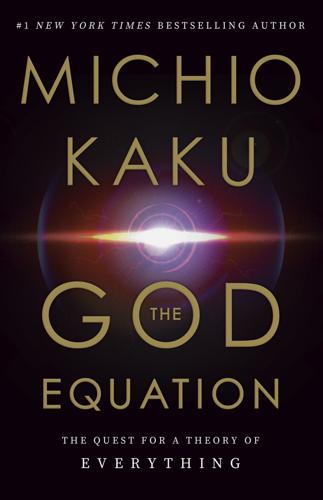
The God Equation: The Quest for a Theory of Everything
by
Michio Kaku
Published 5 Apr 2021
If we start with a universe that is infinite and uniform, then everywhere we look into space our gaze will eventually hit a star. But since there are an infinite number of stars, there must be an infinite amount of light entering our eyes from all directions. The night sky should be white, not black. This is called Olbers’ paradox. Some of the greatest minds in history have tried to tackle this sticky question. Kepler, for example, dismissed the paradox by claiming that the universe was finite, and hence there is no paradox. Others have theorized that dust clouds have obscured starlight. (But this cannot explain the paradox, because, in an infinite amount of time, the dust clouds begin to heat up and then emit blackbody radiation, similar to a star.
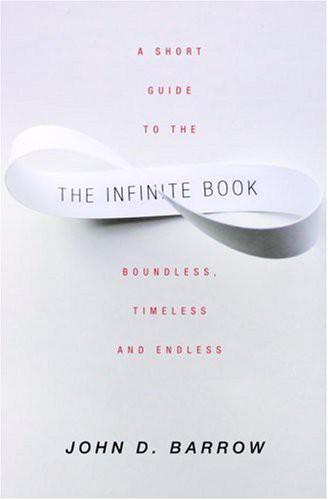
The Infinite Book: A Short Guide to the Boundless, Timeless and Endless
by
John D. Barrow
Published 1 Aug 2005
Halley realised that a universe containing an infinite number of stars creates exactly the same situation. If we look out into the sky we should find that every line of sight ends on the surface of a star. The result: the entire sky should shine like the surface of a star, day and night. But it doesn’t. And that is Halley’s Paradox – except that it’s called Olbers’ Paradox!29 There are some simple ways to avoid the paradox. Suppose that space goes on forever but the stars do not. Space is infinite but the material universe is finite. In this case there would be only a finite amount of light reaching us from the stars and our skies might grow dark when the Sun sets (see Figure 7.18).
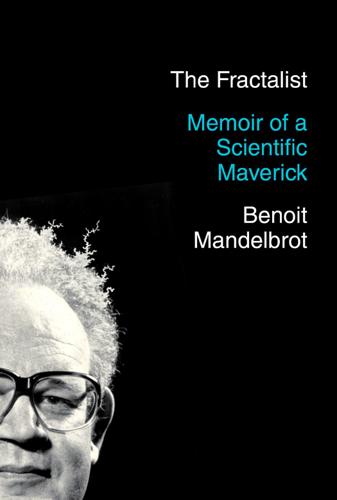
The Fractalist
by
Benoit Mandelbrot
Published 30 Oct 2012
Incredible but true, however, long before any evidence became available, the concepts of a galaxy and clusters of galaxies had been repeatedly invented and forgotten. Also, the natural assumption that faraway shining objects are uniformly distributed in space was analyzed and shown to lead to the embarrassing Olbers paradox, which argues that the sky must be uniformly and infinitely bright. A way to avoid this paradox was proposed by a science fiction writer, Edmund Fournier d’Albe, and developed by astronomer Carl Charlier. But the profession never took it seriously, largely because it required the universe to have a well-defined “cluster” and because relativity theory demands a well-defined overall density of mass.
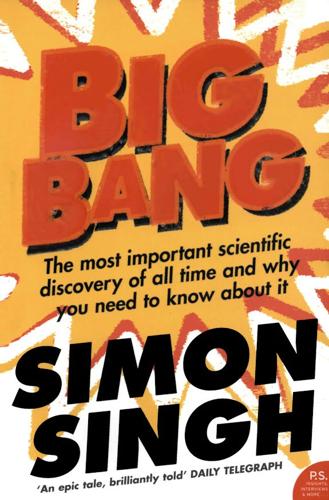
Big Bang
by
Simon Singh
Published 1 Jan 2004
He reasoned that an infinite universe would contain an infinite number of stars, and if the universe was infinitely old then this would have allowed an infinite amount of time for the starlight to have reached us. Hence, our night sky ought to be flooded with an infinite amount of light from all these stars. The obvious lack of this infinite light from space is known as Olbers’ paradox. There are various ways to explain why the night sky is not infinitely bright, but the Big Bang explanation is perhaps the most convincing. If the universe was created just a few billion years ago, then the starlight would only have had enough time to reach us from a limited volume of space, because light travels at only 300,000 km/s.